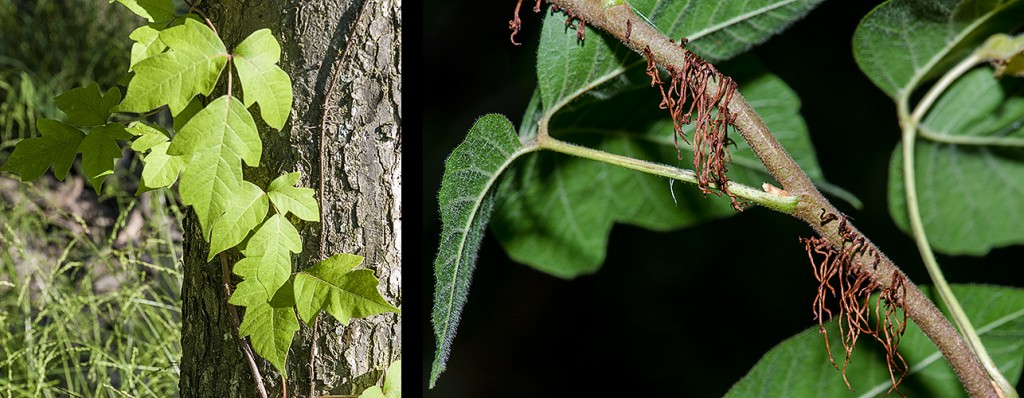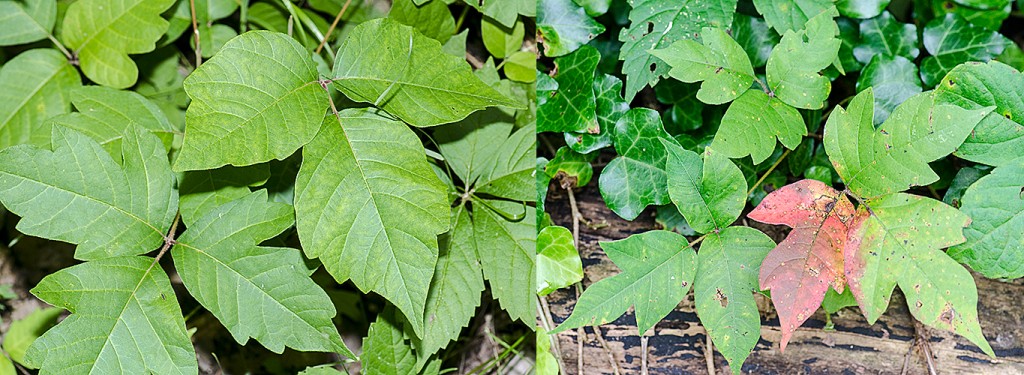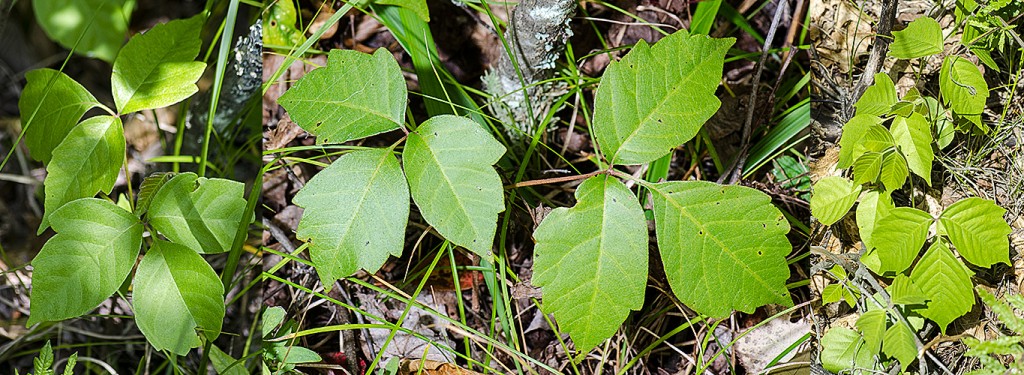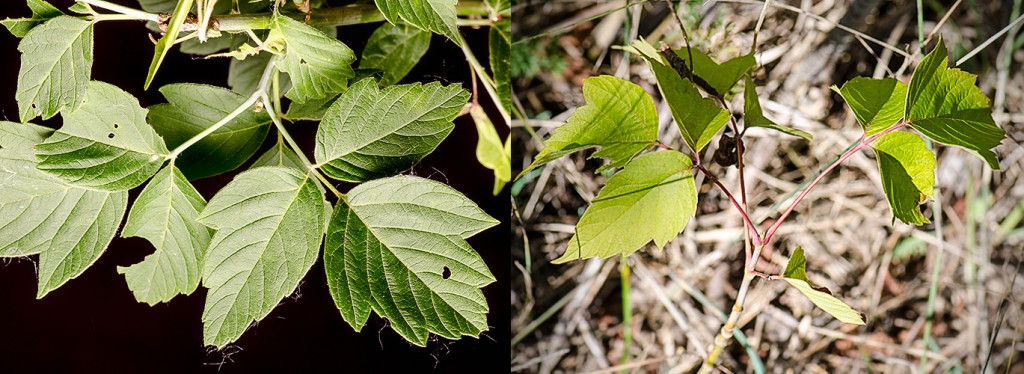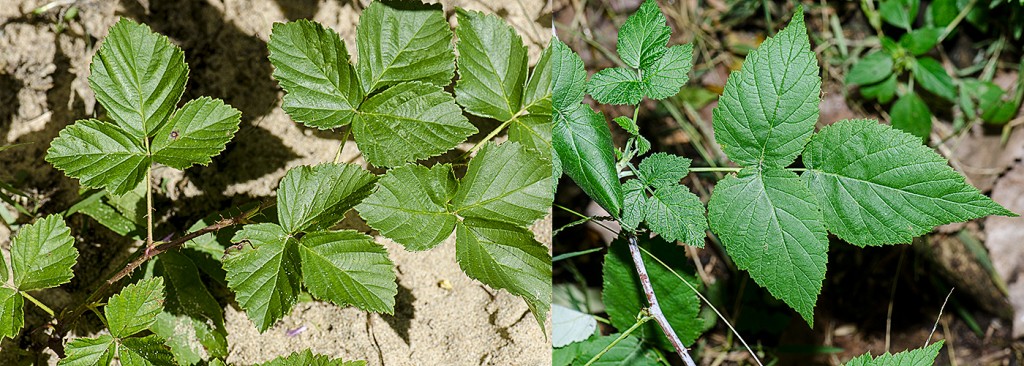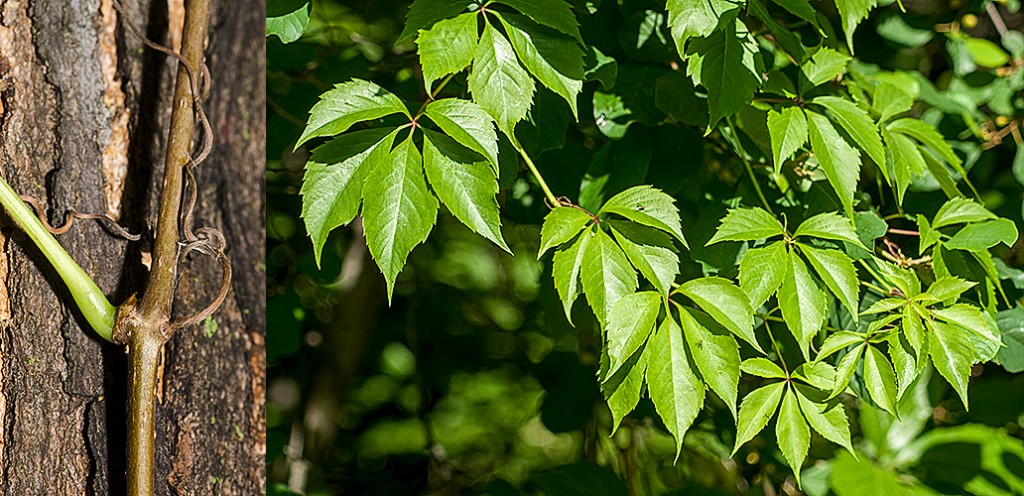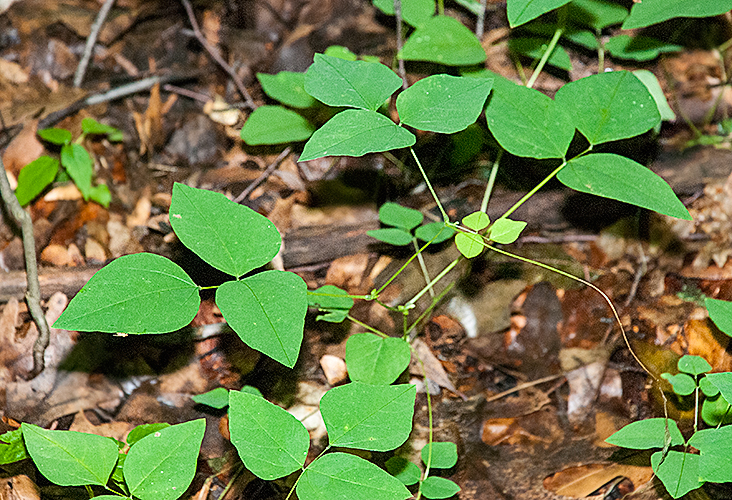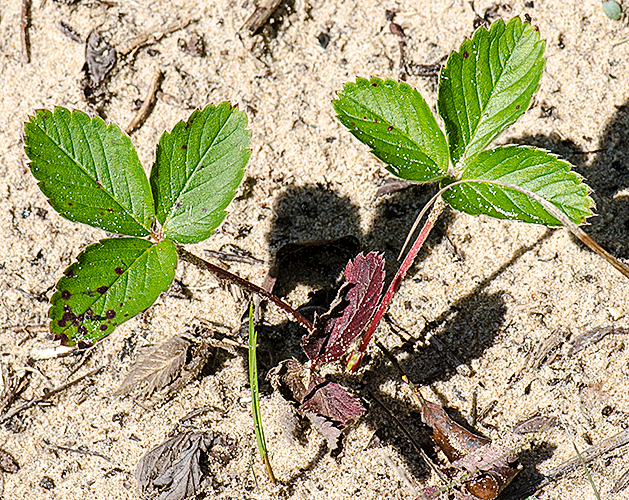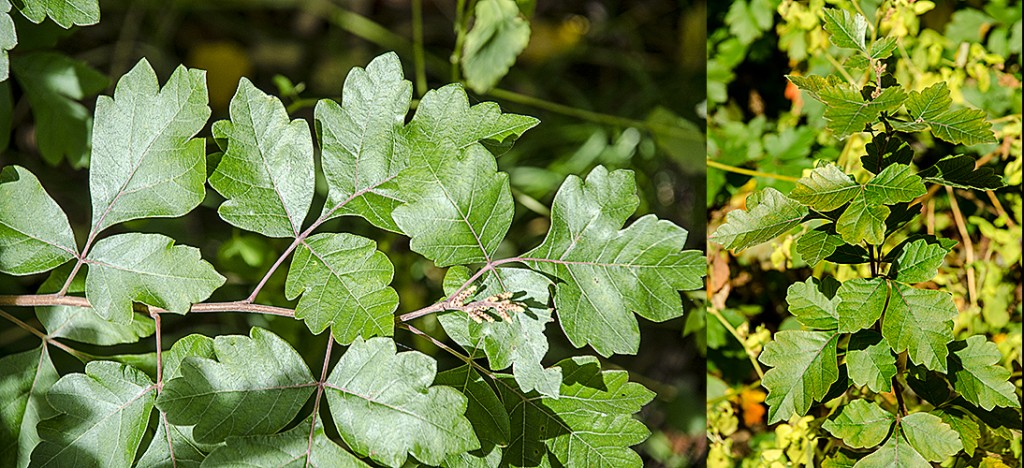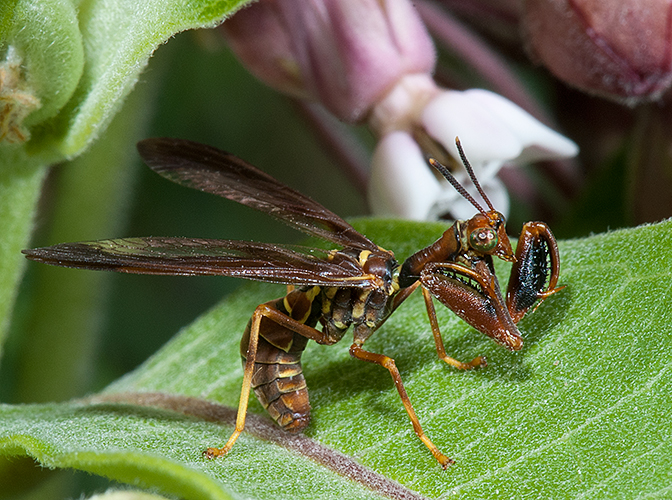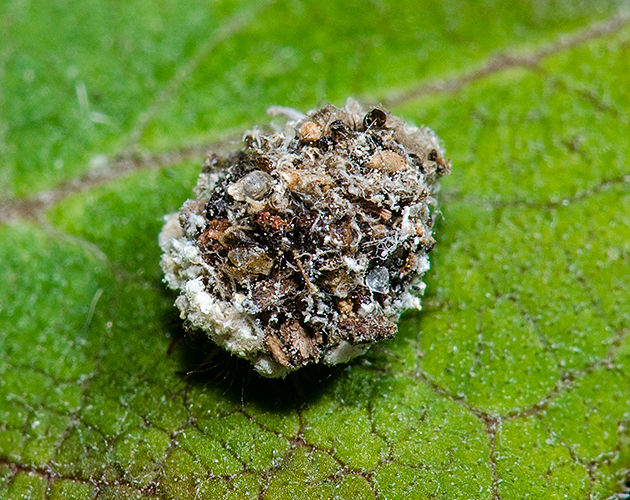Recently, I was shown three photos of plants that a person thought were Poison Ivy. Only one was correctly identified. I searched Google Images for Poison Ivy and found several other species that resemble it. The old adage “leaflets three let it be” will keep you away from Poison Ivy and many harmless species.
There are two species of Poison Ivy in Michigan. Eastern Poison Ivy (Toxicodendron radicans) is found mainly south of the Saginaw-Muskegon line. It is a vine that can creep along the ground or climb trees. It is one of two natives that have aerial rootlets. (The other is Virginia Creeper (Parthenocissus quinquefolia) ). Western Poison Ivy (Toxicodendron rydbergii) grows north of the Saginaw-Muskegon line. It is a small woody plant without aerial rootlets so it never climbs. Both species of Poison Ivy have leaves with three leaflets that are notched with large teeth. The teeth are normally found on half of the leaflet, the half closest to the tip. The alternate (singly along the stem) leaves are smooth above and normally shiny.
Boxelder (Acer negundo) has opposite leaves (leaves in pairs on stem). Its twigs often have a bluish bloom and it is never a vine. Normally its leaves have finer teeth than Poison Ivy. Last weekend, I was at Tawas Point State Park and set up to photograph what I thought was Western Poison Ivy only to discover that it was a Boxelder.
Bramble, Raspberry, and Blackberry (Rubus) often have prickles along the stem. They also might have leaflets with pronounced points. Their leaflet edges are uniformly toothed with fine teeth.
Virginia Creeper (Parthenocissus quinquefolia) has five leaflets not three. It will have aerial rootlets such as Eastern Poison Ivy. If you find it in fruit its berries are purple and not grayish-white like Poison Ivy
Hog Peanut (Amphicarpaea bracteata) has three leaflets but they are untoothed. It rarely climbs trees and has a finer stem then Poison Ivy.
Common Strawberry (Fragaria virginiana) has blunt leaflets with their teeth uniformly spaced. Their leaf stems are furry and they never creep like Poison Ivy vines do.
Fragrant Sumac (Rhus aromatica) leaves have numerous blunt teeth and small lobes on their edges. Catkins, or buds of catkins, often appear at the ends of the stems.
The best time to learn the lookalikes is when they are flowering or fruiting. Study their leaves and the leaves of Poison Ivy. If in doubt, don’t touch it.
Thanks to Jason for inspiring this blog.
Copyright 2015 by Donald Drife
Webpage Michigan Nature Guy
Follow MichiganNatureGuy on Facebook

